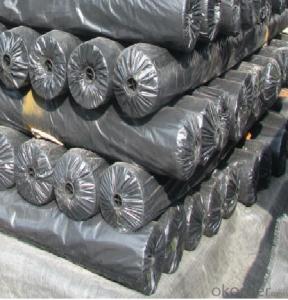As a homeowner, there is always another project on the horizon, which often means finding the right materials. One such material that has caught my eye is ‘Home Depot Geotextile’. This versatile cloth is not only for landscapers and contractors but also a game-changer for do-it-yourselfers like me. Let’s dive into the world of geotextiles and find out why they are an important element in many home improvement projects.
What is Home Depot Geotextile?
Before we go any further, let us first define what geotextiles are. Geotextiles are permeable fabrics made from synthetic materials such as polyester or polypropylene. They are meant to be used with soil, rocks and other materials in order to improve stability and drainage in various construction projects. Home Depot provides several geotextiles each customized to specific needs ranging from weed barriers to landscape fabrics.
Why Use Geotextile?
The use of geotextiles does not only follow the trend; there are practical advantages that make them valuable investments. These include:
Erosion control: The ground becomes stable thereby preventing soil loss.
Drainage: It allows water to move through while keeping soil particles intact.
Root barriers: Prevents invasive plant roots from damaging structures.
Pest protection: Works as a barrier against some pests found in garden beds.
Types of Home Depot Geotextiles
When you visit Home Depot, you will come across different kinds of geotextiles. Some of these include:
Woven Geotextiles: Known for their strength and durability making them suitable for heavy-duty applications.
Non-Woven Geotextiles: Lighter and more flexible therefore ideal for gardening and landscaping.
Needle-Punched Geotextiles: They combine strength with flexibility thus useful in various types of soil stabilization works.
Personal Experience with Home Depot Geotextile
I decided to use Home Depot geotextile in my garden overhaul project. The one thing that struck me was the many options available. Eventually, I settled on non-woven geotextile because it was the simplest to work with and most appropriate for my garden. It was very easy to lay; all one had to do is spread it out, cut it to fit the correct dimensions, and place it where needed. It was a breeze installing, and the changes were immediate. After heavy storms, I saw improved water drain-off and less soil washing away.
Installation Tips
Here are some tips from personal experience when installing geotextiles:
Measure twice, cut once: Ensure that you have the right measurements before cutting into your geotextile.
Sturdy Ground: Make sure that the surface is level and clean of any debris for optimal performance.
Overlap: Ensure there is overlap between layers of the geotextile so that there are no gaps or breaks in coverage.
Secure properly: Landscape staples or pins will hold down the fabric well.
Maintenance and Care
Maintaining your geotextiles is pretty simple. Here are a few things you should know about care:
Regular inspection–Look for any damage or displacement especially after heavy rains or strong winds.
Clean as needed–Eliminate accumulated debris and sediment over time
Replace when necessary–Once it gets old or damaged beyond repair then you have to replace it in order to sustain its efficiency.
The Emotional Connection
For me, using Home Depot’s Geotex cloth didn’t just mean completing a project but also creating a healthier environment for my family. Healthy gardening has been made possible due to improved drainage and erosion control; this gives me great satisfaction.
Conclusion
In conclusion, Home Depot geotextile is a material that provides solutions to the problems experienced in landscaping and construction. Any person whether professional or a DIYer will make their projects better and at the same time contribute to ecological system of the world by utilizing geotextiles. So make sure as you go to Home Depot next time to not ignore the geotextile category. There you could obtain just the right fabric for taking your next project on top of everything else.







